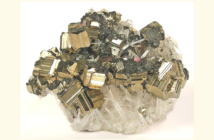Lithium-ion battery recycling has been the achilles heel of green energy for too long. “It’s all very well,” the skeptics say, “but the technology itself is not recyclable.” This has proved embarrassingly correct. Because over 95% of lithium batteries end up as toxic waste. Moreover, lithium, and especially cobalt could soon be scarce resources, the way the battery industry is consuming them.
A Simple, Elegant Nano Engineered Solution

Lithium batteries have a cathode made of lithium-metal oxides. These typically combine cobalt, iron, manganese, and nickel. Therefore, any metal recycler might give their bottom dollar for the business of recovering these. But not many dare.
You see, the few companies that do lithium-ion battery recycling require vast amounts of energy for crushing batteries. Then they melt them, or dissolve them in acid. The result is pure cobalt, lithium, manganese, and nickel. However, the cathode composites themselves are gone forever. Moreover, the recycled minerals cost almost as much as mining new resources.
Zheng Chen, Professor of Nano Engineering at the University of California, San Diego decided he had had enough of this. “The material [they decompose]is in the form of beautiful, well-designed particles,” he realized.

“It has a specific microscopic structure that determines the performance of the battery. A lot of engineering, energy, and time go into making these structures.” Why destroy this? This lead to a remarkable lithium-ion battery recycling discovery.
The professor and his colleagues removed cathodes from half-discharged batteries, and stripped the aluminum substrate away. Then they soaked them in a hot lithium salt bath before drying the solution to a powder. Finally, they rapidly reheated the solution to 1,500º F (800º C) before allowing it to cool slowly.
In the process, they obtained regenerated cathode material with the lithium ions replaced with new. The “beautiful, well-designed particles with a specific microscopic structure” were intact. Moreover, they used half the energy of the traditional process.
A Great Leap Forward for Lithium-Ion Battery Recycling
Their method works on both lithium-nickel-manganese-cobalt batteries in electric cars. And also the lithium cobalt oxide batteries in smartphones and laptops. Thus lithium-ion battery recycling, renewable energy and battery storage took a great leap forward on that day.
Related
Electric Car Battery Materials Become Scarce
Chinas Booming Battery Problem: Recycling Logjam
Preview Image: First Chevy Volt Battery




